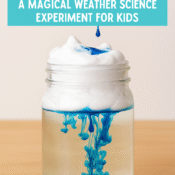
Dancing Popcorn Science Fun: A Bubbling Experiment Kids Will Love
Why Kids (and Parents) Love This Simple Science Trick
Ever had a rainy afternoon or school holiday stretch when you just needed one more fun activity to keep curious minds busy? You’re not alone. Parents around the world are always looking for easy, screen-free science activities that don’t require special equipment or a chemistry degree.
The Dancing Popcorn Experiment is a crowd favourite because it’s:
- Quick to set up
- Requires only 3 ingredients
- Full of bubbling, bouncing, visual excitement
- Scientifically rich — perfect for little thinkers!
The Science Behind the Dance
At the heart of this bubbly performance is a simple chemical reaction between vinegar (acid) and baking soda (base). When these mix, they produce carbon dioxide gas (CO₂), which forms bubbles in the liquid.
But what makes the popcorn dance?
- Popcorn kernels are denser than water, so they sink at first.
- As the CO₂ bubbles stick to them, they become buoyant and float to the top.
- At the surface, the bubbles pop and release the gas, causing the kernels to sink again.
- This creates a bouncy up-and-down motion — like the popcorn is dancing!
This experiment demonstrates key science concepts like:
- Density
- Buoyancy
- Gas production
- Cause and effect
It’s kitchen chemistry and physical science in one joyful jar.
Step-by-Step: How to Make Popcorn Dance
What You’ll Need:
- A tall, clear glass or jar (500ml or more)
- 1 tablespoon of baking soda
- 1/3 cup of unpopped popcorn kernels (use hard, dry ones)
- 1 cup of vinegar
- Water
- Food colouring (optional)
Instructions:
Step 1: Prep the Jar
Fill your jar halfway with water. Add 1 tablespoon of baking soda and stir until it dissolves. Add a few drops of food colouring for extra wow factor.
Step 2: Add the Popcorn
Pour in your unpopped popcorn kernels. Watch them sink to the bottom.
Step 3: Add the Vinegar
Now comes the magic moment! Slowly pour vinegar into the jar — enough to nearly fill it.
Get ready to see the reaction bubble up! Within seconds, you’ll notice bubbles forming and kernels starting to lift.
Step 4: Observe & Predict
Ask your child:
- Why do the kernels float?
- What’s happening to make them fall again?
Encourage them to draw predictions or write down observations if age-appropriate.
Bonus Twist: Add More Pop!
Once the bubbling slows down, you can add more vinegar or baking soda to restart the reaction and keep the popcorn dancing.
Real Parent Tip:
“My daughter loved naming each piece of popcorn like it was part of a dance team. We added glitter for extra flair!” — Leah, Australia
Quick Variant Activity
Short on vinegar or out of popcorn? Try this quick alternative:
Use raisins instead of popcorn — the lighter weight makes them bounce more quickly.
Use lemon juice instead of vinegar for a citrusy-smelling experiment!
Includes:
- Step-by-step visual guide (for print)
- Science fact sheet: Acids, bases, and gases
- Kids’ observation journal sheet
- Certificate of Completion: “Junior Scientist – Fizzy Science!”
PDF comes with classroom use license and home printing options.
Extend the Learning
Want to turn this into a full science exploration day? Try these internal links:
Final Thoughts: Simple Science, Big Reactions
The Dancing Popcorn Experiment proves you don’t need a lab coat to teach real science. With a splash of vinegar and a sprinkle of fun, you’ve created a memory — and sparked scientific thinking.
So next time boredom bubbles up… let the popcorn dance!
FAQ: Dancing Popcorn Experiment
Q: Does it matter what kind of popcorn I use?
A: Yes! Use unpopped kernels (not microwave popcorn) — they’re heavier and better for this experiment.
Q: Can I reuse the same popcorn after it stops dancing?
A: Not really — the reaction weakens over time and the kernels absorb some liquid. But you can refresh the reaction with a new batch!
Q: Is this safe for toddlers?
A: Absolutely — with adult supervision. It’s non-toxic and mess-friendly. Just keep the vinegar away from eyes and help with the pouring.




